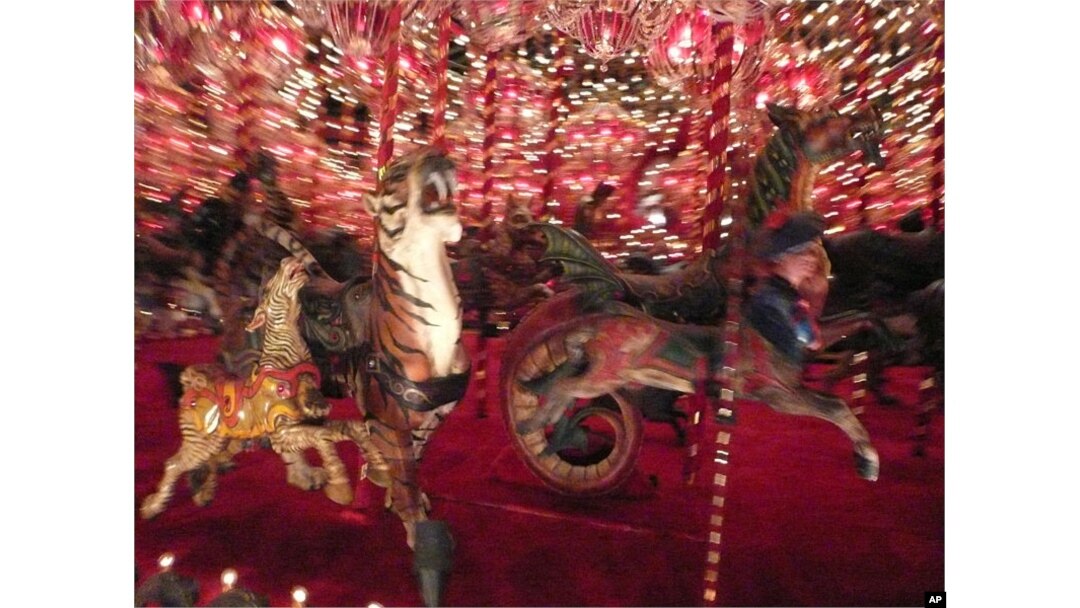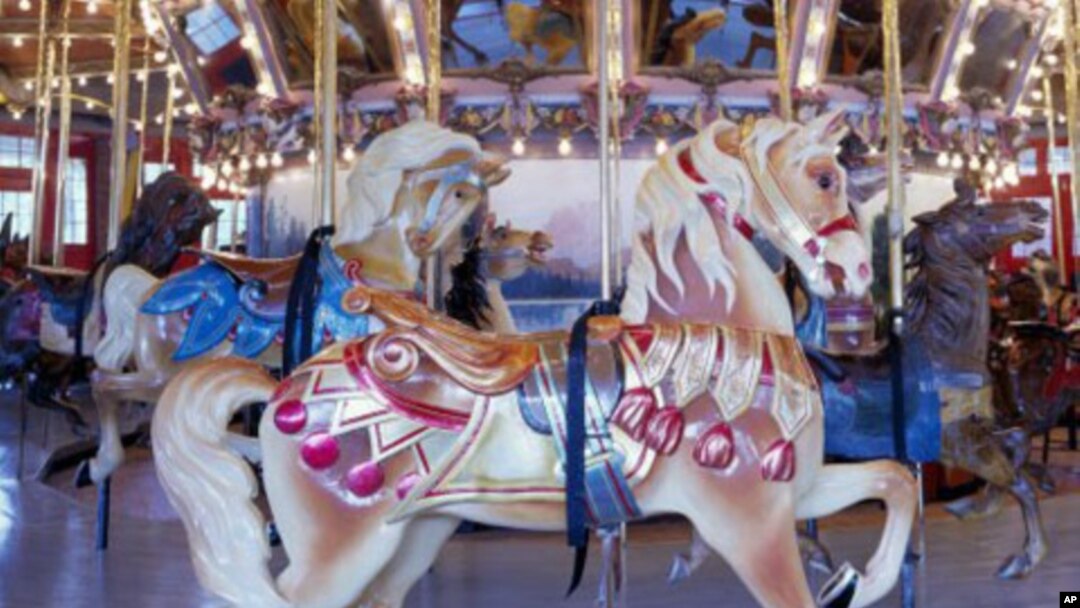It's the time of year, with summer approaching, when Americans are connecting with a memory. Riding one, actually.
Older folks call it a merry-go-round. Younger ones, a carousel. Colorfully decorated, with beautifully painted wooden horses - plus a bench for old folks and kids too scared to get up on horseback - carousels are pure fun. Add tinkly music from its Wurlitzer Band Organ, and the breeze as one whirls around for three or five minutes, and you're back in the innocent days when life moved more slowly.
Authentic carousel organs were augmented by drums, crashing cymbals, clattering woodblocks, and even a little metallic glockenspiel — a percussion instrument similar to a xylophone — all self-contained in the carousel's central housing.

On Burlington, North Carolina's prized menagerie carousel, other animals - like these giant hares - share the limelight.
The word carousel derives from the ancient Italian and Spanish words garosella or carosella, meaning little war. It comes from a serious game played by Arabian horsemen. As far back as Byzantine times — around 450 A.D. — riders were swinging around a center pole in baskets. Mechanical merry-go-rounds appeared in England in the 1700s and in America as early as 1825.
The carousel that we know today was first manufactured by a Scottish immigrant, Allan Hershell, who built steam-powered galleries, as he called them, and shipped them from his factory in New York State to carnivals and beach resorts as far away as the Pacific island of Tahiti.

This indoor carousel is reputed to be the largest in the world. Its 296 wooden beasts - without a horse among them - ride in circles in the House on the Rock in Spring Green, Wisconsin.
Some carousel horses are works of art as well as craftsmanship, and the beautiful panels inside and outside the riding area are often intricately painted landscapes and fanciful scenes.
There are only about 200 authentic Hershell carousels left. A, in Burlington, North Carolina, has become a town symbol. It's what's called a menagerie carousel because of its sets of four cats, ostriches, rabbits and pigs. Wooden ones of course, but they're just as much fun to ride as the merry-go-round's 26 horses.


